The Viking runes are a fascinating topic for historians and mystics alike. As well as being a system of writing that reveals fascinating snippets about the lives of the Vikings, the Vikings believed that the Norse runes also had magical properties, exploited by Viking runemasters, and also used by modern diviners.
Let’s take a look at the Norse runes and what we know about old Viking runic divination practices. But let’s also look at modern runic divination and take a quick look at how to use the Norse runes for divination.
The Norse Runes
The Vikings used a runic alphabet as their form of writing. From about the 2nd to the 8th centuries they used Elder Futhark, a 24-character runic alphabet.
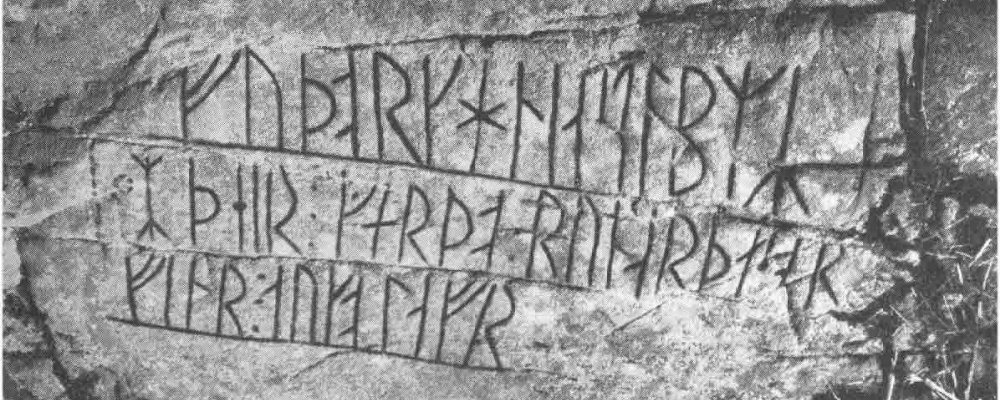
But over time the alphabet was simplified, as is common in many languages, and from the 8th century onwards they used the 16-character Younger Futhark alphabet. Though, interestingly, at the same time, the Anglo-Saxons and the Frisians expanded the same runic alphabet to create Anglo-Saxon Futhorc.
The runes became less popular with the adoption of Christianity, which brought with it Church Latin and the Latin alphabet. However, some isolated Scandinavian communities continued to use the runes until the early 20th century.
Magic Runes
But the Vikings believed that the runes were more than just a system of writing, they believed that they were a sacred script that could be used to shape the world. For example, the Norns, the Norse fates, used the runes to inscribe the destinies of men into the bark of Yggdrasil, the world tree.
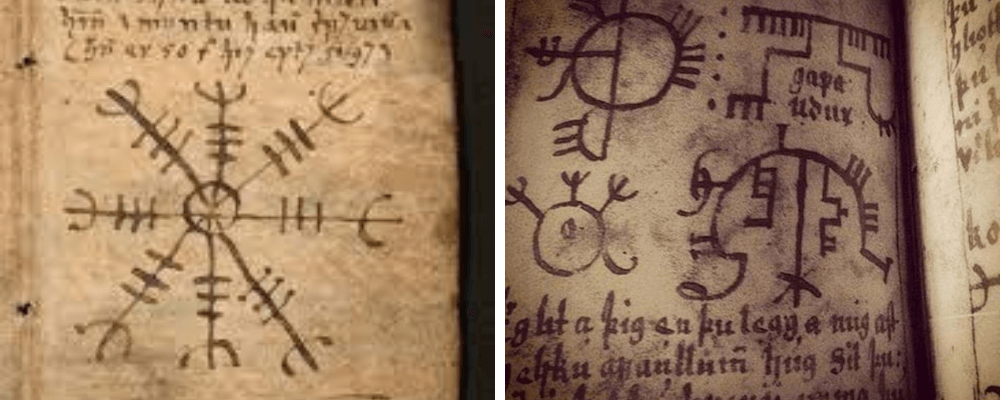
Odin, the principal Norse deity, hung himself from Yggdrasil for nine days and nine nights while pierced by his own spear in order to gain the secrets of the runes, which he then shared with mankind.
But Odin did not show men how to use the runes to write. He also showed them how they could be used to work magic. The Vikings most skilled with the runes were able to use the runes to practice divination. They would also inscribe runes on objects, for example, to create protective amulets or on a sword to ensure victory.
The evolution of the practice of using runes to create magical symbols, such as Aegishjalmur (Helm of Awe) and Vegvisir (Norse Compass), has been partially preserved in the Icelandic magical grimoires. But that is a topic for another day.
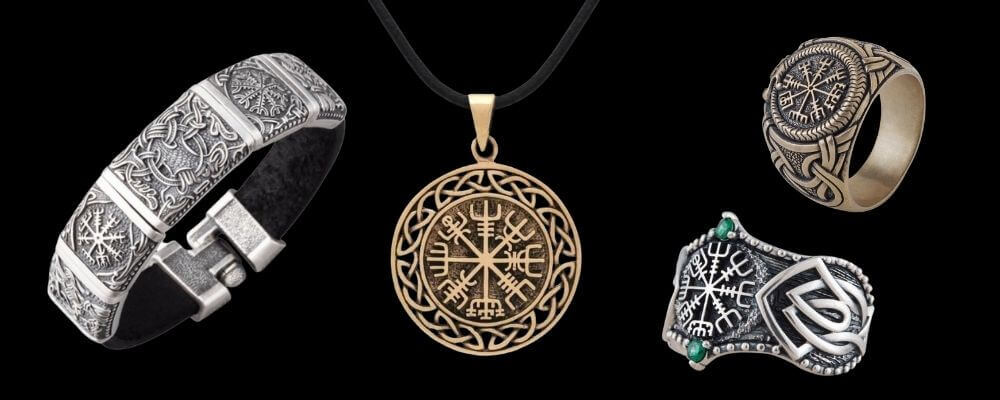
Viking Runic Divination
While we know that the Vikings used the runes as a tool for divination, information about how exactly this was done is lost.
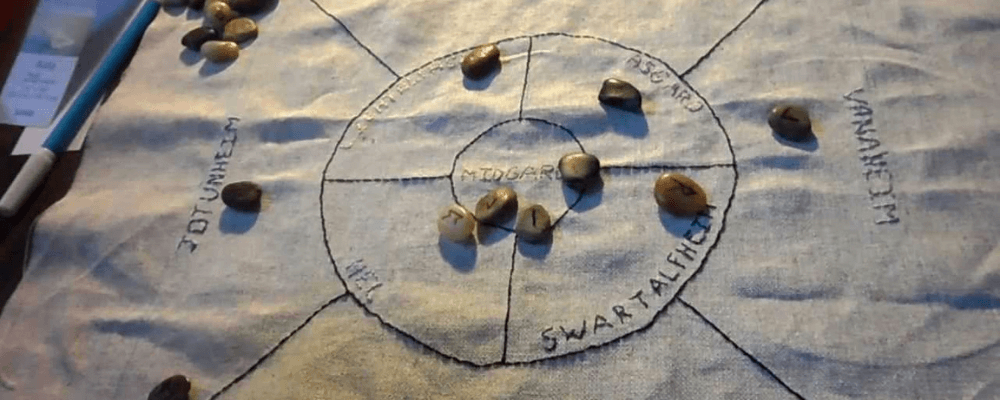
Our assumptions about how the Vikings divined with the runes are primarily based on observations made by the Roman historian Tacitus hundreds of years earlier about Germanic practices.
It is assumed that the runes were carved onto small objects, such as sticks or bones. A runemaster would then ask a question and then throw at least some of these inscribed objects before him (or her – there is very good evidence that Viking women were involved in divination). They would then make an interpretation based on where the runes landed.
But this is largely the limit of our confirmable knowledge.
Modern Runic Divination
Modern runic divination practices date from the 17th century when a Swedish mystic named Johannes Bureus was inspired by visions to create a new runic divination system that marries the Younger Futhark runes with the Kabballah, a Jewish mystical tradition.
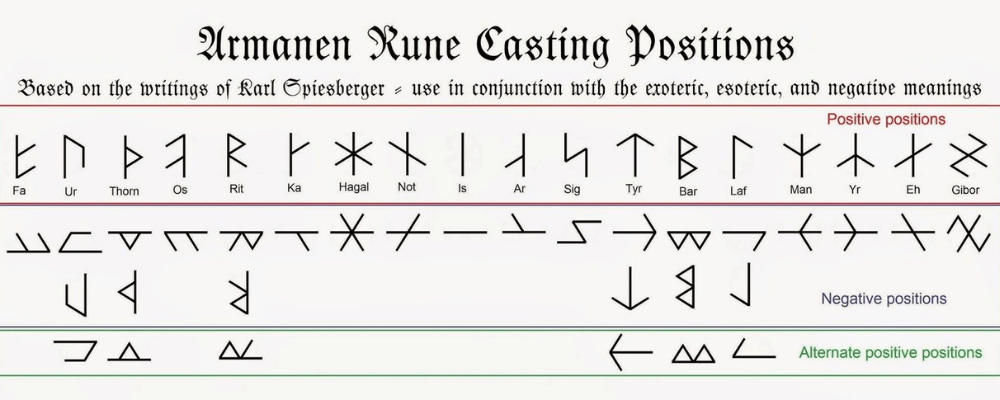
But the system used by most runic diviners today is based on the Armanen runes system, created by the Austrian occultist Guido von List at the start of the 1900s. His system is also based on the Younger Futhark runic alphabet used by the Vikings.
Many mystics have continued to adapt and refine the Armanen runic divination system over the last century or so.
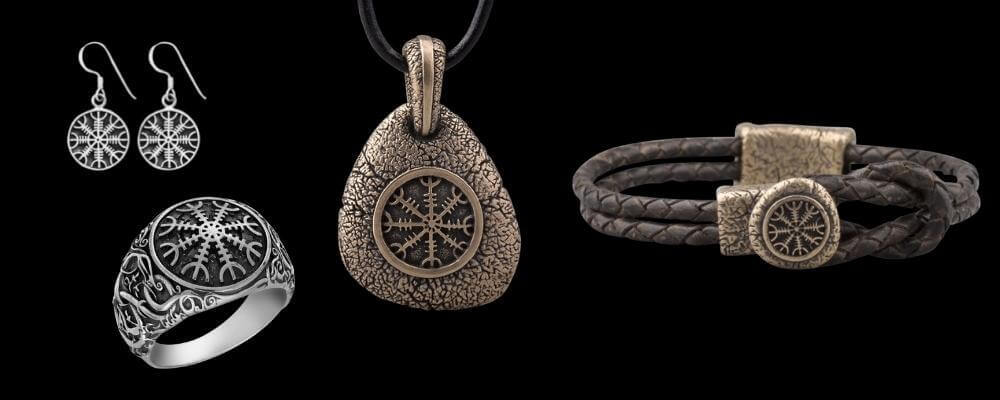
How to Read the Runes
Several different ways of reading the runes for divination have been developed by researchers and mystics, so if you look around, you will find many approaches.
But at the core of every practice is using the runes to connect to your intuition.
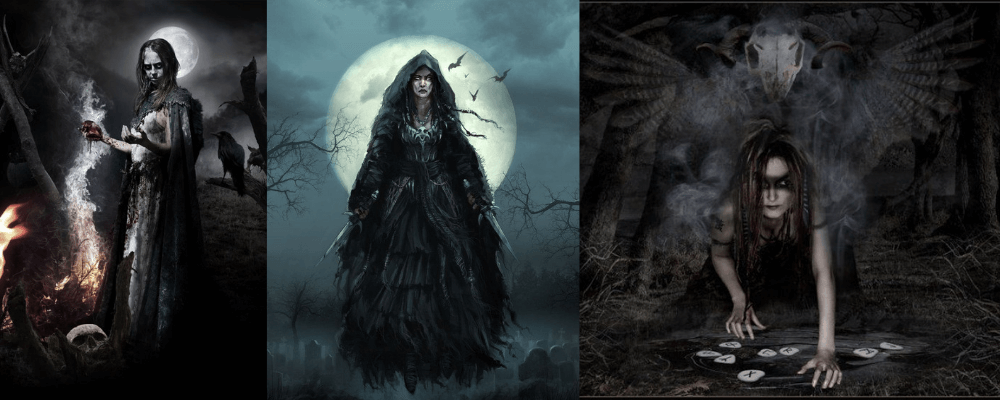
While the runes are the tool for divination, understanding them relies on the “divine spark” within each person to interpret them.
So, every divination practice will begin with a form of ritual designed to let the reader quiet their mind, release the things that are fogging their vision, and allow them to connect with their intuition.
After the reader is prepared, it is about putting the question that you want to be answered out into the universe, again using the power of the mind.
The Vikings believed that all the natural forces in the world were connected, running through Yggdrasil, the world tree at the center of the universe. So, when you put a question out there with intent, you can tap into these forces to find the answer.
Only after all of this is done does the reader cast the runes, throwing them down, drawing them from a bag, or using a similar method. They will then interpret an answer based on which runes fall, and where they sit in relation to one another.
Rune Casting
There are many different guides out there for how many runes should be cast and how. The two most popular methods are laying out patterns and throwing them onto a map.
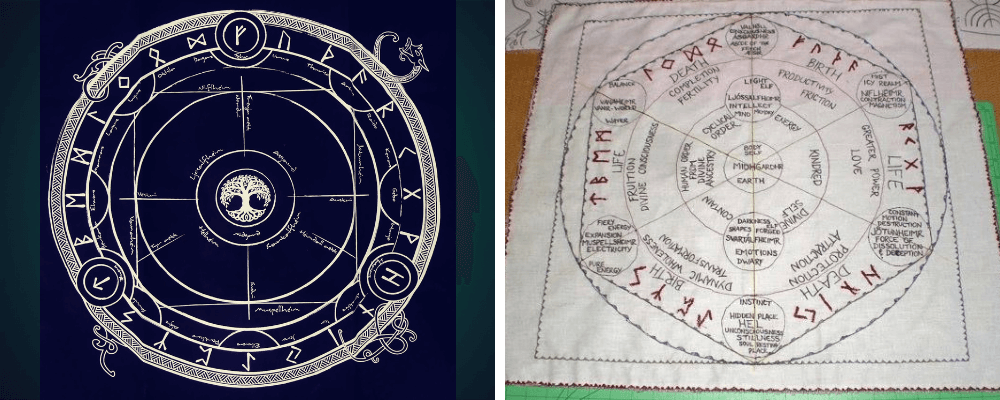
Rune Layouts
If you are using a laying method, you will draw the runes and place them in a certain pattern to reveal meaning. There are various different patterns to use, chosen based on the situation and the preferences of the reader.
Here are some of the most common.
The Three Norns
This is a simple process of casting three runes and laying them out in a horizontal line.
The first rune illuminates what actions from the past have brought you to the current situation.
The second rune characterizes your current problem and may help you understand it better.
The third rune alludes to the most likely future outcome based on where things sit currently.
The Four Dwarves
The four dwarves casting works in a very similar way, except that you place the four runes in a circle, starting at the top and working clockwise.
The top rune again alludes to things that have already happened that have brought you to where you are. It can be considered the primary “cause” rune.
The rune on the right characterizes the things that you are doing that are influencing the situation, while the rune on the left illuminates the influence that others are having.
Finally, the rune at the bottom reveals a truth about the situation which is currently hidden. It often points out a motivation that we are not aware of or admitting to, but has an enormous influence on the current situation.
Vé Branches
For this casting you lay seven runes in a V, starting at the bottom and working upwards, laying the runes, one on the right and one on the left, until you have seven runes.
The rune at the bottom represents the current situation, and each line stemming out from it a likely potential outcome.
The first rune on the branch represents the most likely action. The second rune reveals the motivation for that action, and the third rune suggests the most likely outcome.
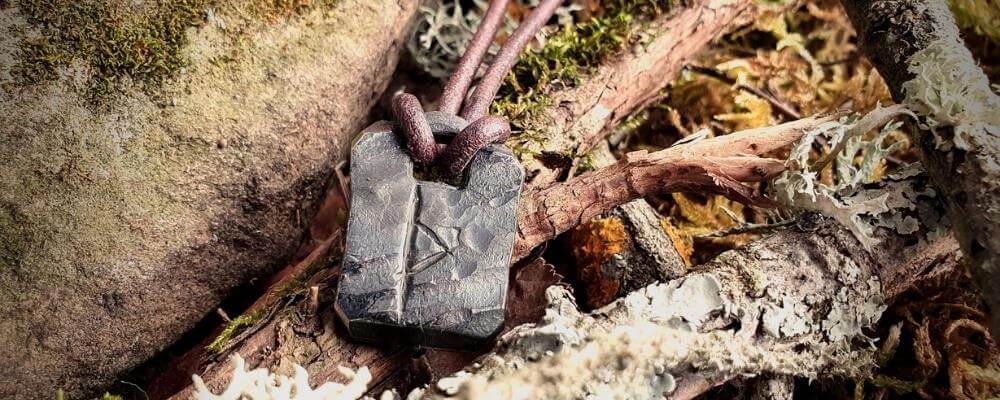
Casting Boards
The other most popular method is to use a casting board or sheet, with areas for the past, present, and future, or other important regions drawn on the board. After asking the question you then throw the runes down, and where they land dictates what each rune relates to.
Sometimes the names of the worlds of the Norse cosmos drawn on the board or sheet and used as proxies for concepts. For example, outer realms, such as Muspelheim and Jotunheim represent the objective universe, while inner realms, such as Asgard and Helheim, represent psychological influences. The central realm of Midgard then represents how these elements come together.
Interpretation
The established and agreed-upon guidance for interpreting each of the runes, in combination with your intuition, depends on exactly which runic system you are using. Interpretations also tend to change depending on whether the rune falls upright, upside-down turned on its side, and so forth.
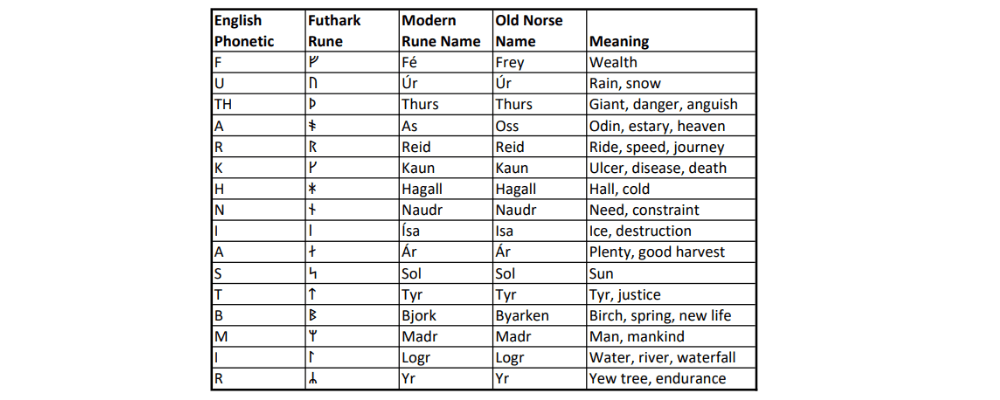
However, they are all derived from the original meanings associated with each rune in Viking times, though those meanings have significantly evolved and expanded over the intervening centuries.
Below you will find a list of the Younger Futhark runes and their traditional meanings. But if you want to know more about their evolving mystical meanings, this information is available in many places.
Are You A Believer?
Whether or not you believe in the power of runic divination is down to the individual. It’s not hard to imagine that, while many Vikings certainly believed in the power of the runes, there were others who were skeptical and focussed rather on forging their own destiny.
What do you think of runic divination?
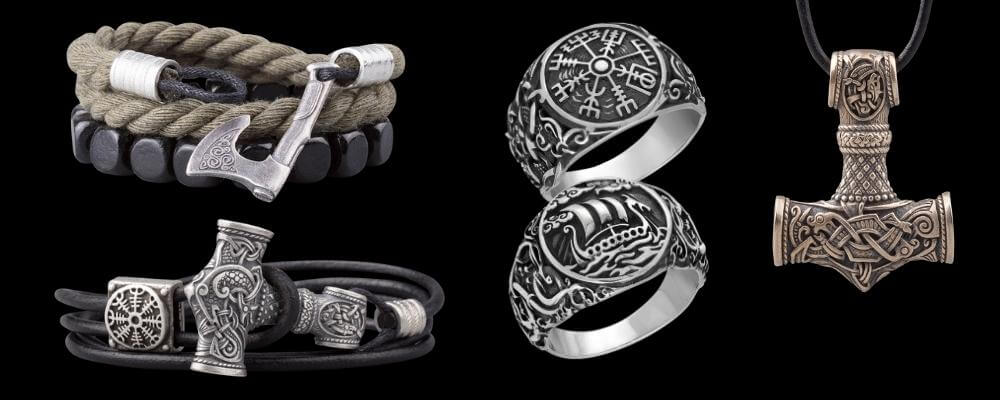
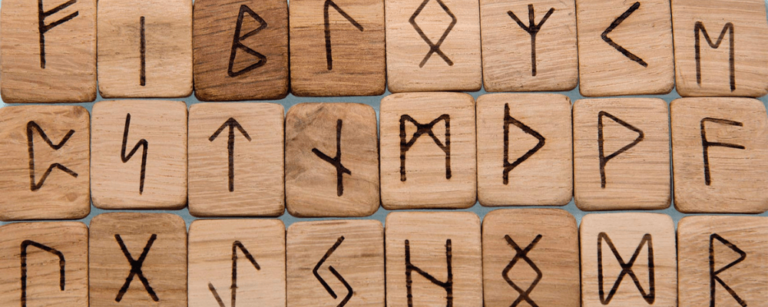



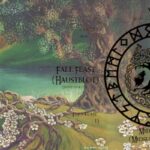
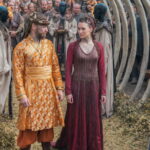
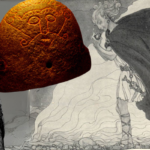
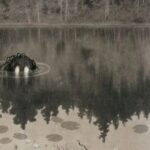
Ive discovered your treasures. i am eager to learn more.
Thanks! We hope you find what we have been working on interesting.